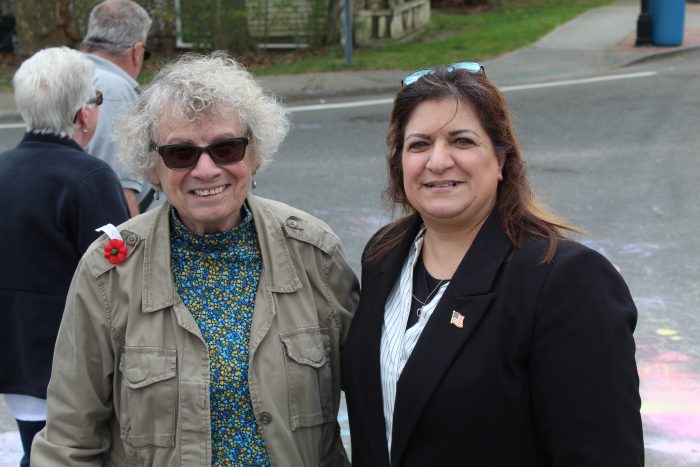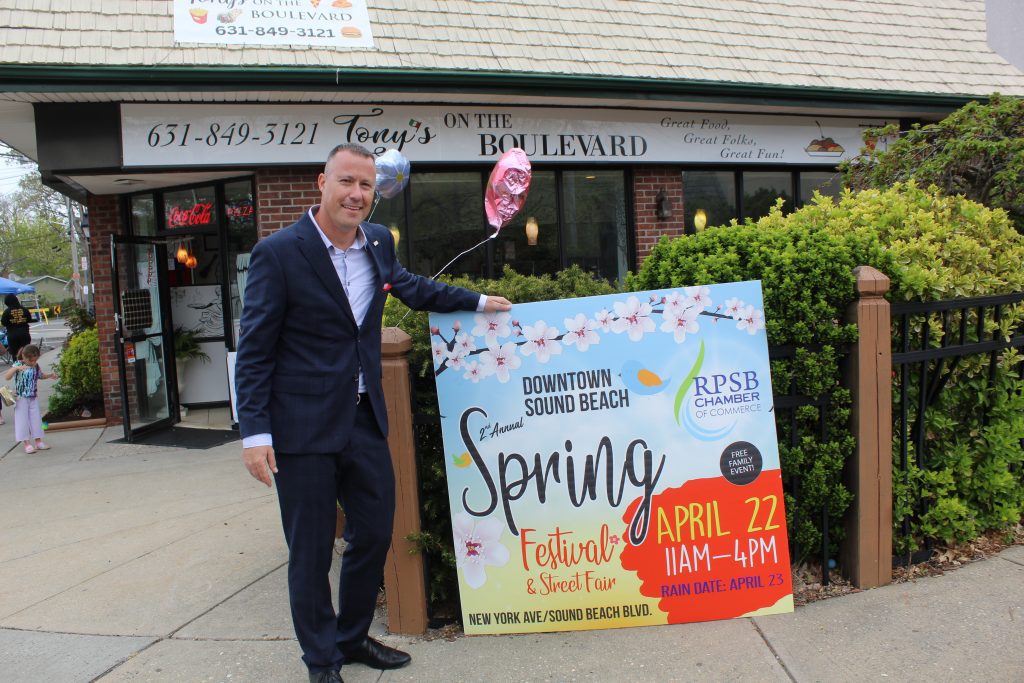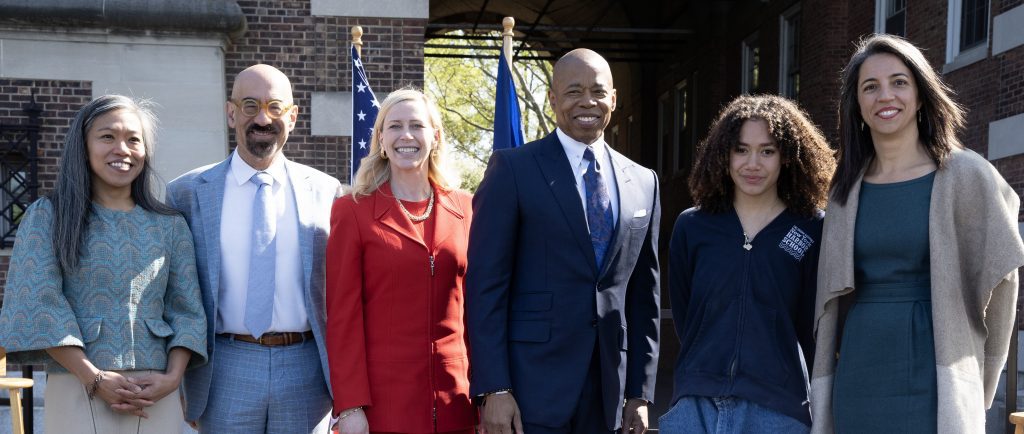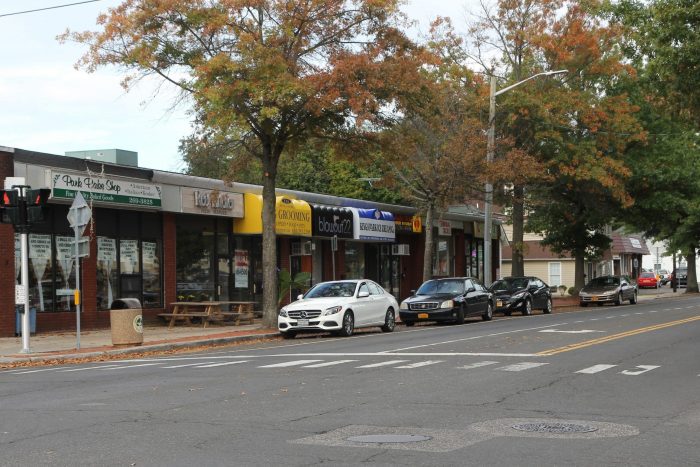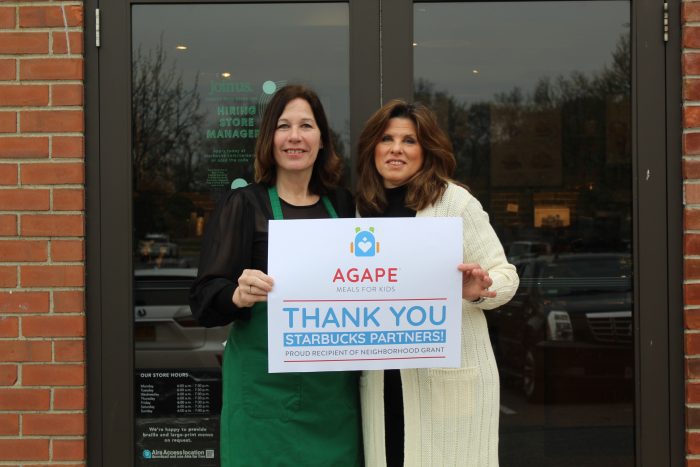Port Jeff Station community celebrates Earth Day with Greenway cleanup

At the eastern trailhead of the Setauket-Port Jefferson Station Greenway trail, a group of volunteers and community members met on Earth Day, April 22, kicking off the first cleanup of the season.
The Friends of the Greenway, a subsidiary of the Three Village Community Trust, hosted the event, which featured volunteers from various community groups, including the Stony Brook-based Avalon Nature Preserve. The cleanup coincided with Earth Day, a global holiday that recognizes the achievements of the environmental movement and the need for sustainable planning.
Greenway: an environmental triumph
“We schedule this [cleanup] in April for Earth Day to celebrate the Earth,” Herb Mones, TVCT president, said during the event.
Mones first became involved with the trail in 1999, when former New York State Assemblyman Steve Englebright (D-Setauket) asked him to head a task force for its planning. The task force included educational programming and active community collaboration, followed by a planning phase, which took 10 years.
The concept of a multipurpose trail was revolutionary for its time, Mones suggested.
“In Suffolk County in particular, there are very, very few greenways that are multimodality paths — paved paths for residents, pedestrians and bicyclists,” he said. “It was a process of getting people to understand what a bike path would look like.”
The task force’s vision was soon enacted, and the Greenway has been servicing locals since 2009. Mones described the trail as in “pretty good condition,” though regular pockets of litter have tended to stick around. The Friends of the Greenway organization targets those areas once per month, keeping its community trail tidy and clean.
Celebrating Mother Earth
Volunteer cleanup initiatives are putting the themes of Earth Day into practice at the community level.
Englebright, for whom the trail was renamed in 2022, was present during the cleanup. For him, the convergence of local cleanup efforts with Earth Day reflect the environmental movement’s local and global momentum.
“The volunteerism was very heartening and very rewarding to me,” he said. “When people are volunteering their time and focusing their energies on Earth Day, it’s just a positive vibration and it speaks well for the role of the trail in the maturation of our communities.”
Throughout his time in public life, Englebright has been a vocal advocate for the environment, one of the earliest voices to ring the alarm on overdevelopment and sprawl, open space preservation and water quality protection in Suffolk County.
Over time, however, the former assemblyman said he had observed even greater attention for sustainability and environmental consciousness.
“I’m greatly encouraged to see people of all ages — there were people with white hair and people at various grade levels of our public schools — all working together with their enthusiasm reinforcing one another, reinforcing the premise that Earth Day should be special,” he said.
In Port Jefferson Station, there are several new development proposals, most notably at Jefferson Plaza, just a block from the trailhead. [See story, “Developers pitch plans for Jefferson Plaza,” June 24, TBR News Media website.]
While Mones accepts new development projects as “inevitable,” he said those projects should be grounded by sound community plans, considering the interests of all concerned parties.
“Development and the environment can work together, but it takes kind of a synergy between town planners, the developer and the community to work together to do a plan that works for everybody,” he said.
Englebright said the redevelopment plans for Jefferson Plaza and other projects have been, up to this point, guided by such concepts. He expressed optimism that the Port Jeff Station/Terryville community could hash out a workable compromise.
“When you say redevelopment, it’s also reinvestment into a community,” he said. “I hope that we can bring those projects forward that are being planned for the redevelopment of Port Jefferson Station in a way that lifts all of the boats in the harbor at the same time.”
The North Shore Rail Trail, which connects Mount Sinai to Wading River, was formally opened last summer. The two trailheads at Port Jefferson Station and Mount Sinai are about a mile apart. Englebright remains optimistic that the two may soon intersect, enabling a continuous bike ride from Setauket to Wading River.
“They should be linked up,” he said. “Look, if the Appalachian Trail can go the length of the Appalachians from Maine to Georgia, and they can link that together, then we can link our trails together here on Long Island.”
























